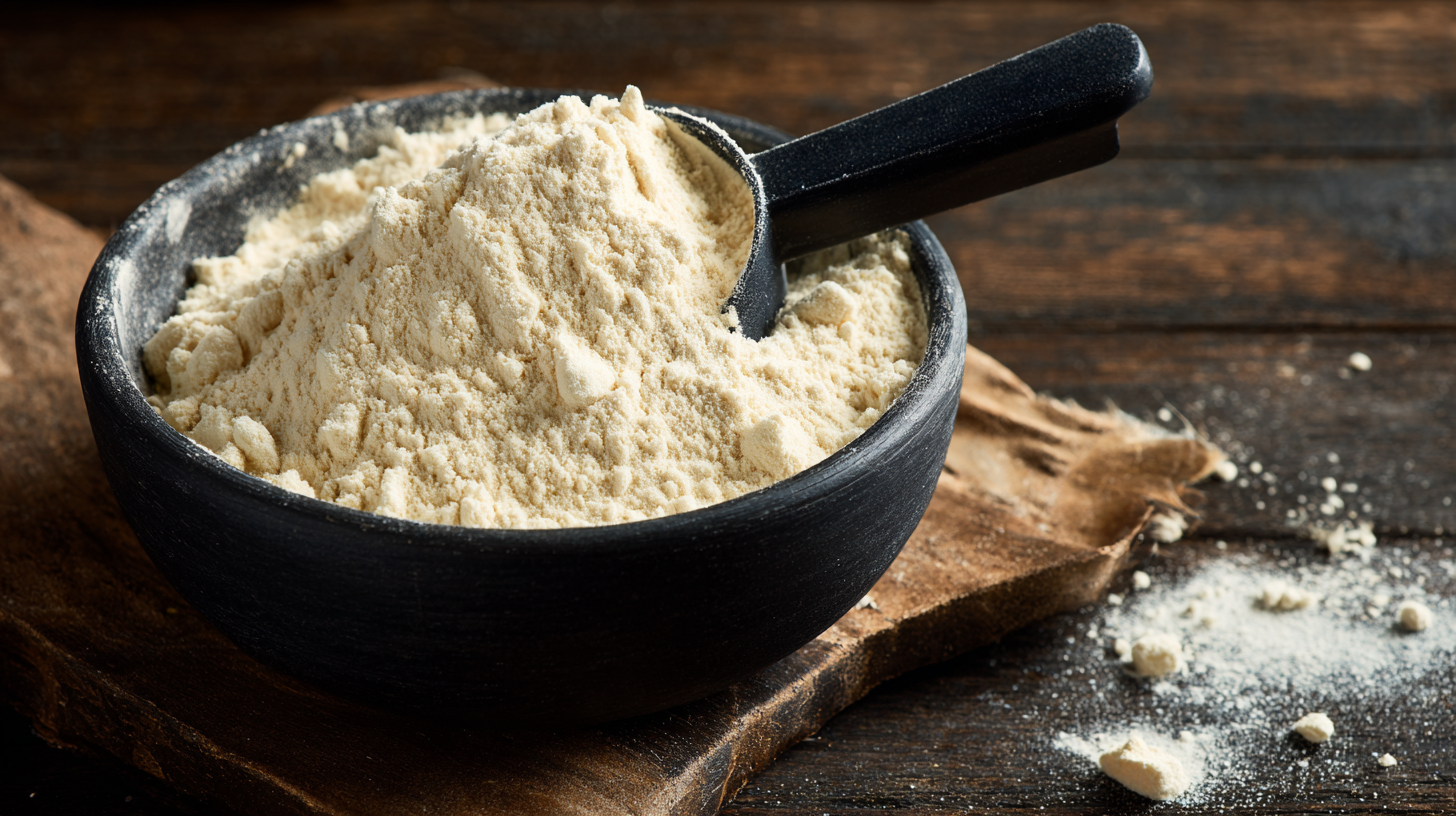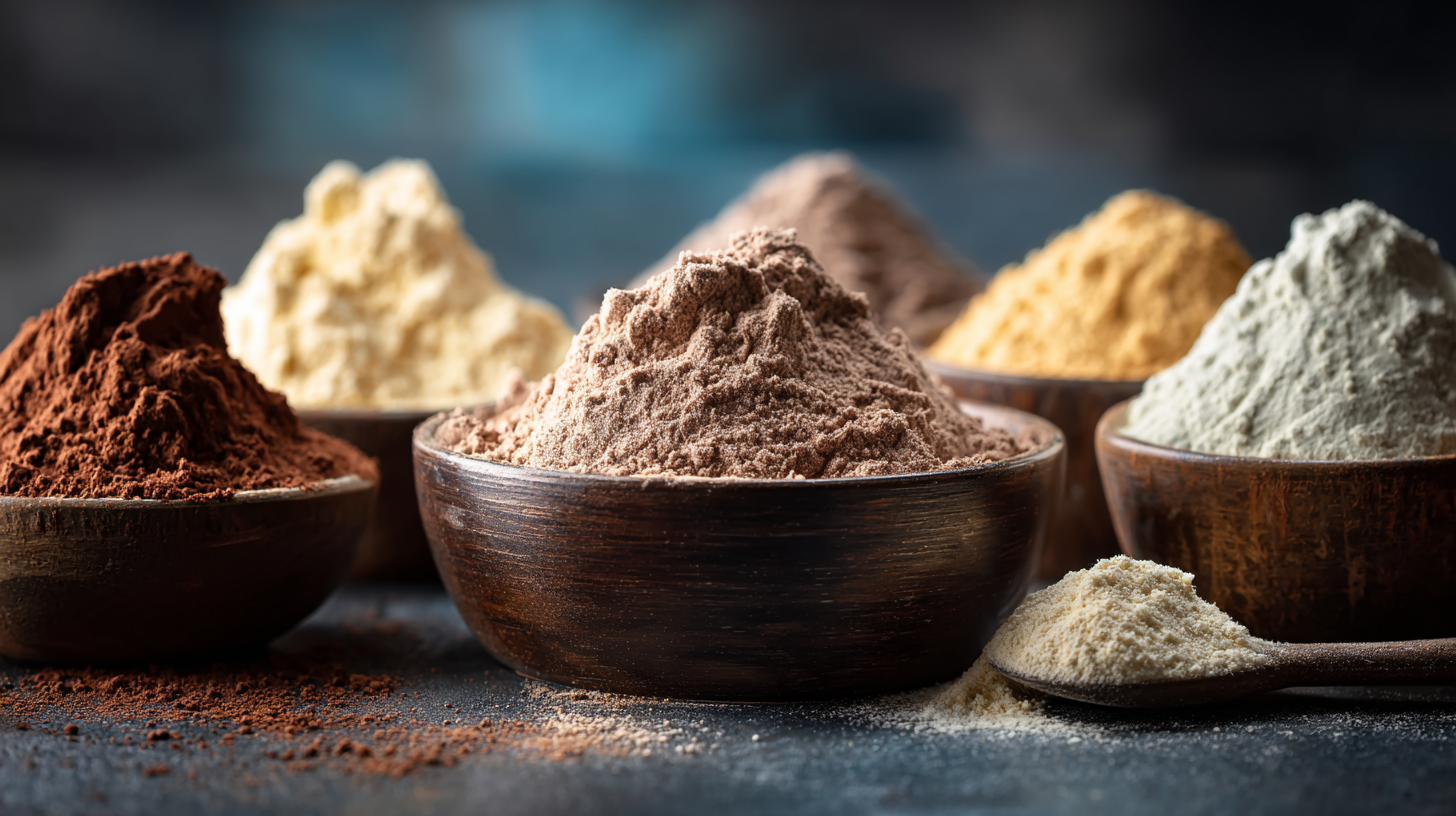 In the ever-evolving health and wellness market, the demand for high-quality Isolate Protein continues to surge, with the global protein supplements market projected to reach $33.58 billion by 2027, growing at a CAGR of 8.4% from 2020 to 2027, according to a report by Grand View Research. However, while the increasing availability of various protein isolates presents a plethora of options for consumers, it also unveils a series of hidden challenges in selecting the best products.
Factors such as sourcing, production standards, and the nutritional profile of different isolates can significantly influence purchasing decisions for global buyers. Furthermore, discrepancies in labeling and quality control can lead to confusion and misinformed choices.
As the popularity of Isolate Protein continues to climb, understanding these challenges is crucial for making informed selections that align with health goals and dietary needs.
In the ever-evolving health and wellness market, the demand for high-quality Isolate Protein continues to surge, with the global protein supplements market projected to reach $33.58 billion by 2027, growing at a CAGR of 8.4% from 2020 to 2027, according to a report by Grand View Research. However, while the increasing availability of various protein isolates presents a plethora of options for consumers, it also unveils a series of hidden challenges in selecting the best products.
Factors such as sourcing, production standards, and the nutritional profile of different isolates can significantly influence purchasing decisions for global buyers. Furthermore, discrepancies in labeling and quality control can lead to confusion and misinformed choices.
As the popularity of Isolate Protein continues to climb, understanding these challenges is crucial for making informed selections that align with health goals and dietary needs.
In the ever-evolving world of global commerce, the selection of high-quality isolate protein is paramount for buyers aiming to meet diverse consumer demands. Understanding the importance of quality is not merely a matter of preference; it is essential for maintaining competitive advantage. Buyers must navigate a complex landscape marked by varying protein sources, nutritional profiles, and manufacturing processes that directly influence the effectiveness and safety of products. As the market for isolate protein continues to expand, discerning the nuances and standards that distinguish quality can significantly impact brand reputation and consumer trust.

Moreover, buyers should consider the implications of international supply chains and regulatory environments that can affect product availability and compliance. With the introduction of new technologies and methods in production, the landscape is also shifting towards greater transparency in sourcing and ingredient integrity. As global trends towards health and wellness gain momentum, the onus lies on buyers to educate themselves on the subtleties of protein types, ensuring that choices are not solely based on price but are also informed by rigorous quality assessments. This proactive approach will empower buyers to make decisions that align with the growing expectations of health-conscious consumers worldwide.
When selecting the best isolate protein, global buyers must navigate a variety of nutritional factors to ensure they choose the right product for their needs. One key consideration is the protein's amino acid profile. High-quality isolate proteins should provide a complete set of essential amino acids to support muscle repair and overall health. Buyers should look for products that specify their amino acid content on the label, ensuring that they meet their dietary requirements.
Additionally, the source of the protein plays a significant role in its overall effectiveness. Whey, casein, soy, and pea proteins each come with distinct benefits and potential allergens. For example, whey is quickly absorbed, making it ideal for post-workout recovery, while casein offers a slower release of amino acids that can be beneficial overnight. Understanding these differences can help buyers tailor their protein selection to their lifestyle and dietary preferences.
**Tips:** When evaluating isolate proteins, prioritize those with minimal additives and sugars. Always check for third-party testing to verify the purity and quality of the protein source. Finally, consider your dietary restrictions—vegan, lactose-free, or gluten-free options are increasingly available to accommodate diverse nutritional needs.
| Nutritional Factor | Importance Level | Typical Values | Recommended Daily Intake |
|---|---|---|---|
| Protein Content (per serving) | High | 20 - 30 g | 50 g |
| Amino Acid Profile | Critical | Complete Profile | Varies |
| Digestibility | High | 80 - 100% DFA | N/A |
| Fat Content | Low | 1 - 3 g | < 70 g |
| Carbohydrate Content | Low | 1 - 5 g | < 300 g |
| Added Ingredients | Moderate | Vitamins/Minerals | N/A |
When selecting the best isolate protein, global buyers must delve deep into the sourcing and manufacturing practices that shape product quality. According to a recent market analysis by Grand View Research, the global protein supplements market is projected to reach $32.6 billion by 2027, underscoring the growing demand for high-quality protein products. However, not all protein sources are created equal. It is crucial for buyers to understand the origins of their protein, including whether it is derived from grass-fed cattle, non-GMO sources, or sustainably farmed plants. These factors greatly influence the amino acid profile, digestibility, and overall nutritional value of the protein.
Tip: Always ask for transparency on sourcing practices when shopping for protein isolates. Consider brands that publish third-party testing results, which can provide insights into the purity and quality of their products.
Manufacturing practices also play a pivotal role in protein production. Processes such as cross-flow microfiltration and cold-processing can preserve the natural nutrients and bioactive compounds found in protein sources. A study published by Nutritional Insights notes that improperly processed protein can lead to denaturation, which diminishes its health benefits. Therefore, choosing manufacturers who prioritize quality control and adopt advanced technologies is essential.
Tip: Look for proteins that are processed with minimal heat to ensure maximum nutrient retention, thereby enhancing your health benefits.
When it comes to selecting the right isolate protein, understanding labels is essential for global buyers. The market is flooded with various products, each boasting different ingredients and nutritional benefits. However, the challenge lies in deciphering these often confusing labels. Buyers must be proficient in identifying key indicators such as protein content, amino acid profiles, and the presence of additives or artificial sweeteners. A thorough inspection of the ingredient list can reveal not only the quality of the protein but also any allergens or unwanted substances that might compromise health goals.

Another critical aspect is nutritional information, which is crucial for making informed choices. It’s important to look beyond just the protein percentage. Checking the serving size, caloric content, and macro-nutrient breakdown helps to contextualize how the product fits into an overall diet. Moreover, nutritional claims like "low-fat" and "sugar-free" can sometimes be misleading, as they may refer to per-serving statistics without considering overall consumption practices. Thus, being able to navigate and decode this information is pivotal for consumers aiming to achieve specific health and fitness objectives while ensuring they make wise purchases.
When it comes to selecting the best isolate protein, global buyers face a significant dilemma between price and quality. In recent years, the pea protein market has emerged as a prominent player, driven by increasing demand for plant-based alternatives. The market is segmented by type, including concentrates, isolates, and texturized proteins, with each category catering to distinct consumer preferences. Buyers must weigh the cost efficiency of protein concentrates against the higher quality and pureness of isolates. This delicate balance often determines the overall purchasing decision, impacting health, nutrition, and dietary goals.
Additionally, the source of pea protein plays a crucial role in market dynamics. Varieties such as chickpeas and yellow peas provide unique nutritional profiles, adding layers to the comparison. The application of these proteins stretches across diverse sectors, from meat alternatives to ready-to-drink beverages, dairy substitutes, nut butters, and snacks. Each application further informs the buyer's choice, emphasizing the necessity for informed decision-making based on both quality and price. As the interest in sustainable and health-conscious eating continues to rise, understanding the complexities of protein sourcing and isolation becomes fundamental for consumers aiming to make prudent purchasing decisions in a competitive market.
